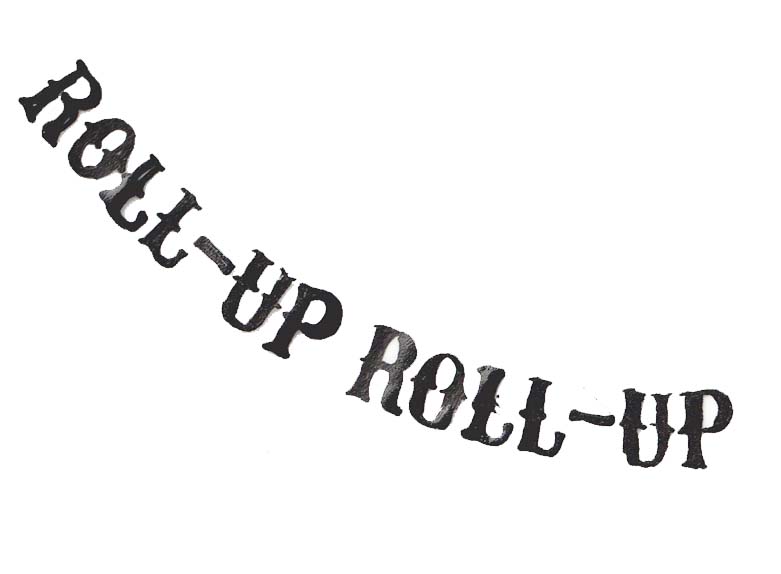 It is December and everyone is busy with the lead up to Christmas. In his chapter on December in his book The English Year, Steve Roud reports that, perhaps unsurprisingly, most of what we consider to be a traditional English Christmas was mostly invented by the Victorians or imported from America and Germany. Even Santa’s red and white outfit is a fairly recent phenomenon. Contrary to the image of Merrie England popularised by the Victorians, our ancestors would have decorated their homes with a huge bough of mistletoe hanging from the ceiling not a Christmas tree, they would have eaten roast beef and Frumenty (a spicy milk pudding from what I can make out) not goose and Christmas pudding, and they would have gathered around a giant flaming Yule log to tell stories.
It is December and everyone is busy with the lead up to Christmas. In his chapter on December in his book The English Year, Steve Roud reports that, perhaps unsurprisingly, most of what we consider to be a traditional English Christmas was mostly invented by the Victorians or imported from America and Germany. Even Santa’s red and white outfit is a fairly recent phenomenon. Contrary to the image of Merrie England popularised by the Victorians, our ancestors would have decorated their homes with a huge bough of mistletoe hanging from the ceiling not a Christmas tree, they would have eaten roast beef and Frumenty (a spicy milk pudding from what I can make out) not goose and Christmas pudding, and they would have gathered around a giant flaming Yule log to tell stories.
One element of the history of Christmases in England that I knew nothing about, and Roud explains really well, is the banning of Christmas by the Puritans in the mid Seventeenth Century. Roud says that the Puritans were not just against the way people celebrated Christmas but the very idea of the festival itself. No wonder they have such a miserable reputation. All this was countered by the Restoration in England, but not in Scotland. There, the Scottish Church “continued to frown on Christmas and the direct result was the sharp divergence between the ways the two neighbouring countries celebrated the season.” The English celebrated Christmas and the Scots celebrated New Year, or Hogmanay as it is commonly known. I had assumed Hogmanay was really old, probably pre-Christian but Roud states that the earliest citation of the word is around 1680, and the origins of the word have perplexed scholars for years. Roud says it is likely that the word probably comes from the Old French “aguilanneuf” meaning “the last day of the year, new year’s gift, the festival at which new year’s gifts were asked with the shout of aguillanneuf!” and he questions how it could have come from France to Scotland. I’m intrigued by this. Mary Queen of Scots was on the Scottish Throne from 1542 to 1567 and prior to this had been a French Princess. The area around Craigmillar Castle in Edinburgh is still called Little France to this day because it was where Mary’s French retainers settled. Surely it is not such a stretch to think that the tradition proliferated locally in Mary’s reign and became widely popularised in the face of the ban on Christmas?
In Stephen Moss’ chapter on December in his book Wild Hares and Hummingbirds, the landscape in Somerset is white with frost. He describes a flock of long-tailed tits flitting along the hedgerow, “separate yet together, as if connected to one another by invisible strands of elastic”. This is such a good description. I remember seeing a similar flock in my in-law’s garden on a similarly frosty morning. It was as though they were a single entity rather than a collection of individual birds. I love long-tailed tits, like little pom-poms with a beak and tail.
I have one more chapter left of The English Year but have now come to the end of Wild Hares and Hummingbirds. It’s a beautifully poetic and thoughtful book, one to digest slowly as the seasons change. Strangely for such a lovely book, I’m left feeling unsettled. In nearly every chapter Moss recounts the loss of species after species to the countryside, largely caused by the activities of man. In this final chapter he does the same, explaining that the short-eared owl was once a regular sight across Britain but their numbers have declined so dramatically that seeing one is now a special event. Moss says, “if the pattern of the seasons is broken…then the connections between us and the natural world may also be shattered, perhaps for ever. If swallows fail to adapt, then we will not simply have lost a wild creature, but also everything that creature means to us.”
Statements like this send me into an emotional panic then weariness. Fields and woods I loved are now houses and roads. Google maps reveals how many gardens have been paved over. What would it take to live ‘off-grid’ I wonder? At the very least, a sympathetic landlord. We’ve joined the local wildlife trust, have been conservation volunteers, are mindful of the impact of our lives, avoid over-consumption, and try to help our kids understand the value and wonder of the natural world. What Wild Hares and Hummingbirds lacks is some information on what Stephen Moss’ practical response is to the declines he recounts. How does he live? He’s one of the leading naturalists in this country, responsible for wonderful television programmes like SpringWatch. Does he have solar panels? Did he join the protests in Paris at the climate change summit? Is he a vegetarian? What actually makes a difference to the survival of the countryside we so cherish? If you’re out there Mr Moss, and on the off chance you’re reading this, maybe you could let us know.
P.S. Here is some lettering I’ve been working on for a circus-themed project.






